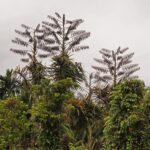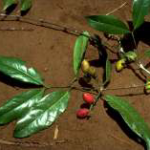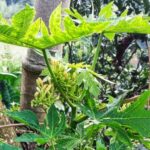Landolphia camptoloba (Apocynaceae)
Common names: Mbungumbungu, dinsania, dinsona (Kongo). Magoki is also used for all Landolphia species with edible fruit.
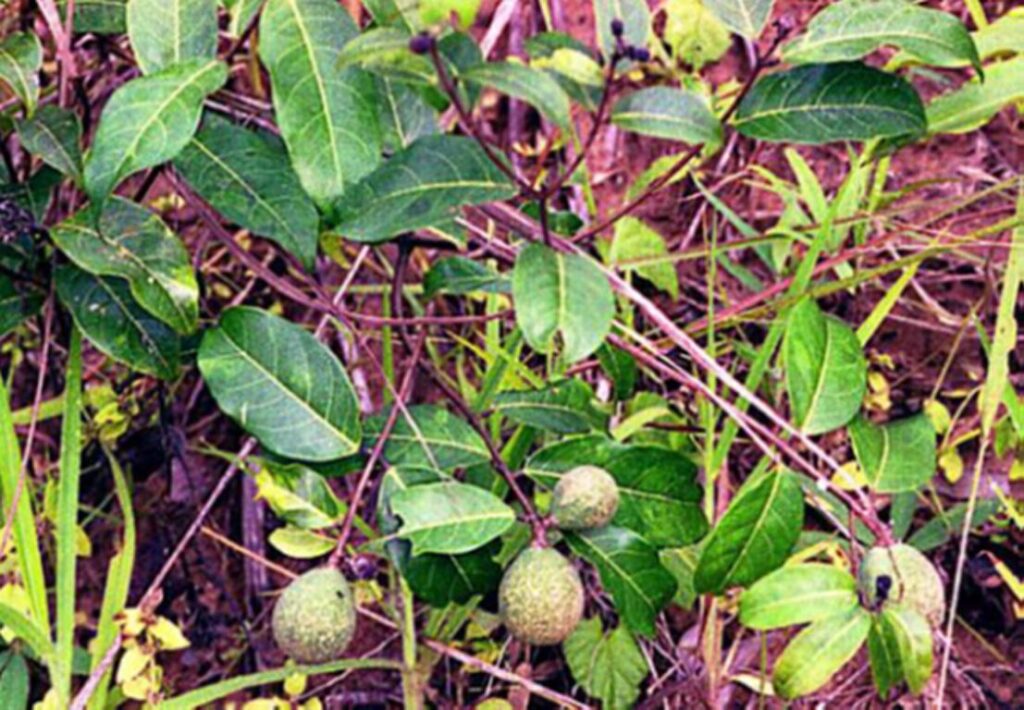
Description
A slender vine or shrub growing from 30 cm to 8 m long. Mature fruits, 5 cm in diameter, are yellow to orange with red or brown spots, have a white pulp and can be found throughout the year.
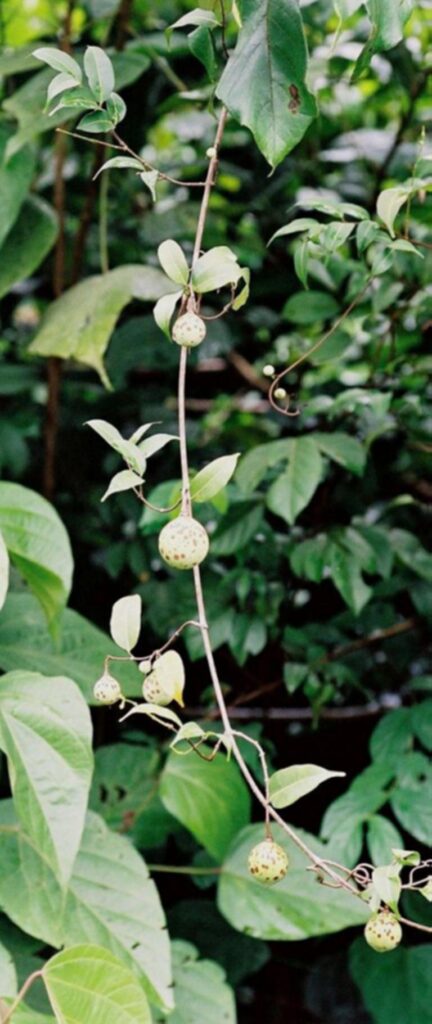
Ecology and propagation
Grows on sand at the forest edge in dry forests, woodlands or savanna in Angola and adjacent parts of D.R. Congo and Zambia. Can be grown from seed.
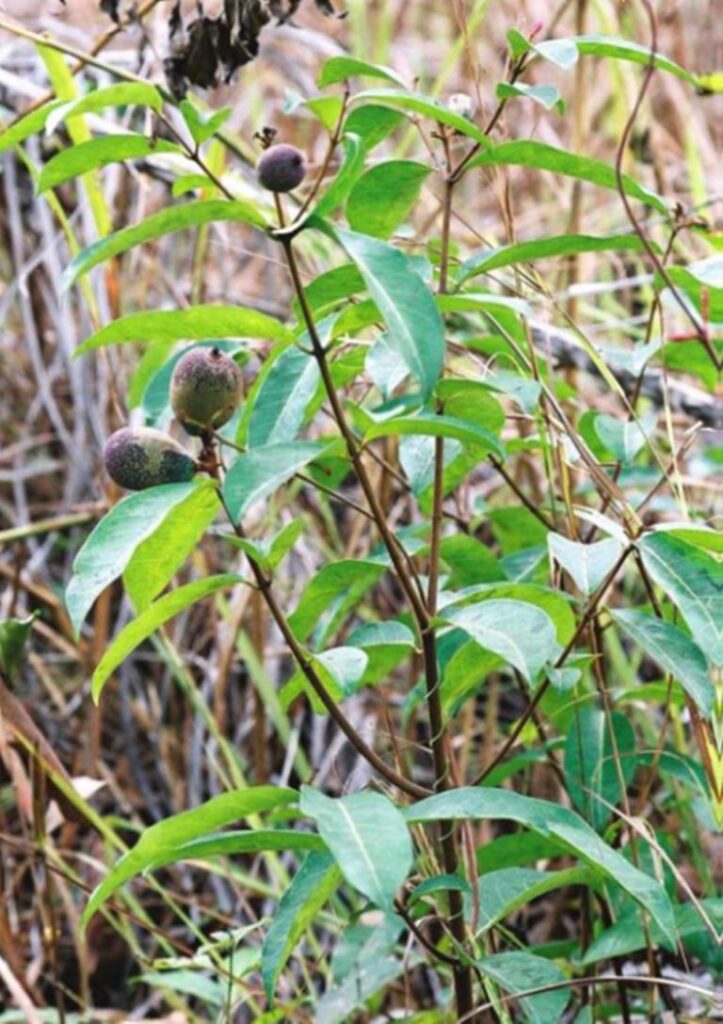
Uses
The fruits are eaten, particularly by children. The latex is extracted from the roots and used for repairing bicycle inner tubes. Unripe fruit is eaten to relieve coughing. Fruits are crushed and soaked in water and the liquid taken to expel intestinal worms. The fruit extract is dropped into the eyes to treat conjunctivitis.
References
Gillet & Pâque 1910, De Wildeman 1934, Renier 1948, Daeleman & Pauwels 1983, Mukoko Matondo 1991, Persoon et al. 1992, Neuwinger 2000, Nsimundele 2004, Kibungu Kembelo 2010
Landolphia dewevrei (Apocynaceae)
Synonym: Landolphia parvifolia var. johnstonii; Common names: Dinsona, londilondi (Kongo), white ball rubber
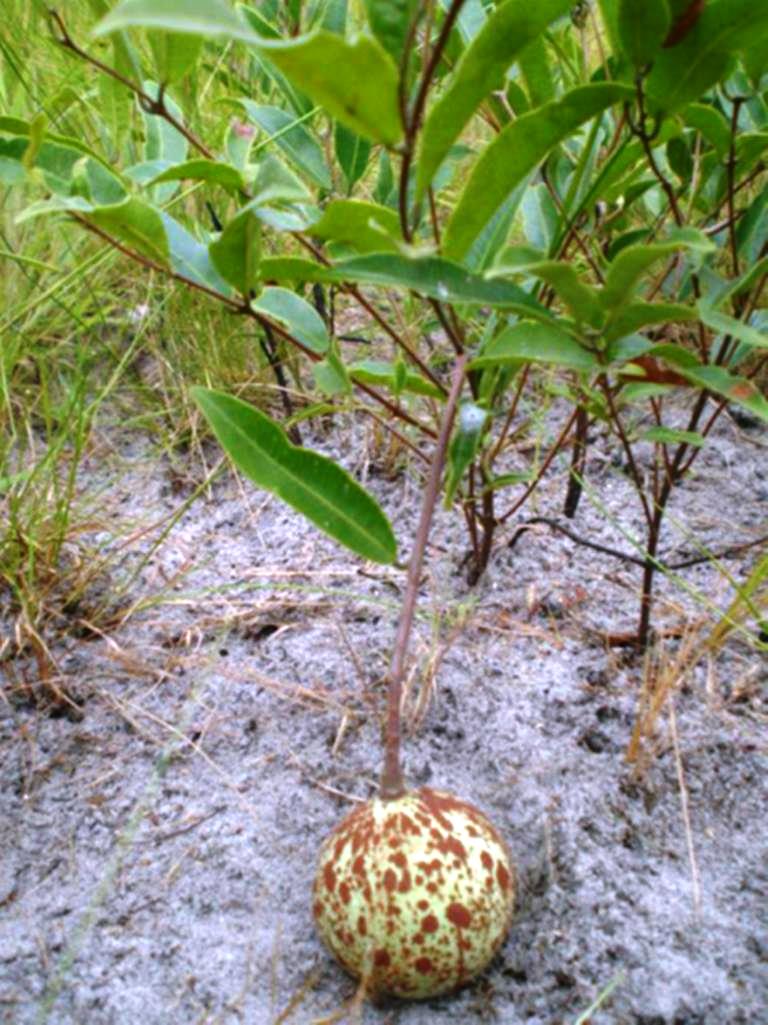
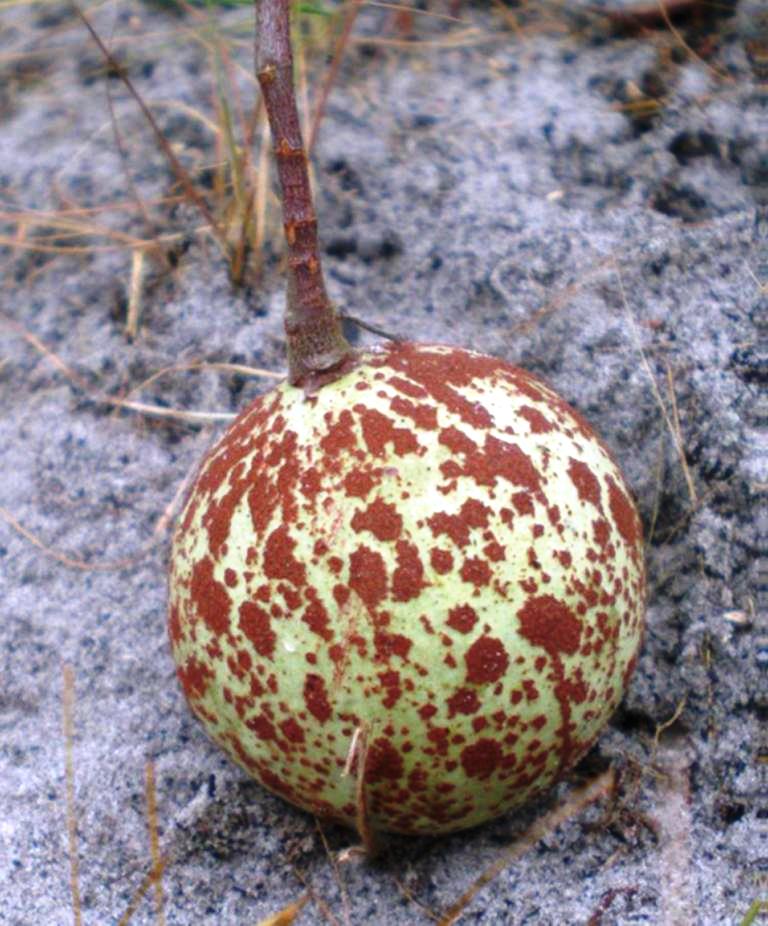
Description
A small shrub up to 4 m tall or liana with smooth grey to brown bark bearing latex. Leaves 0.6 – 6.6 cm long and 0.4 – 2.7 cm wide. Inflorescence terminal, often with empty bracts, 1 – 4.5 cm long, bearing 2 – 40 fragrant flowers. Sepals reddish brown, corolla yellowish white or pink, throat and buds often darker; Fruits globose, whitish grey, yellow or greenish-violet, often with rusty to yellowish spots, up to 4.8 cm in diameter, containing 8 – 30 seeds.
Ecology and propagation
Present in open bush and woodland in the savanna across Central Africa from Gabon to Mozambique. Can be grown from seed or cuttings.
Uses
The fruits are edible and sweet though they can be rather acidic. This is the main source of rubber from the savanna in Kongo Central. The flowers are visited by honeybees.
References
De Wildeman 1908, Williamson 1955, Daeleman & Pauwels 1983, Leeuwenberg & Kupicha 1985, Persoon et al. 1992, Malaisse 1997, Kibungu Kembelo 2008, Ruffo 2002, Konda et al. 2015
Landolphia lanceolata (Apocynaceae)
Common names Dimbulu (Kongo)
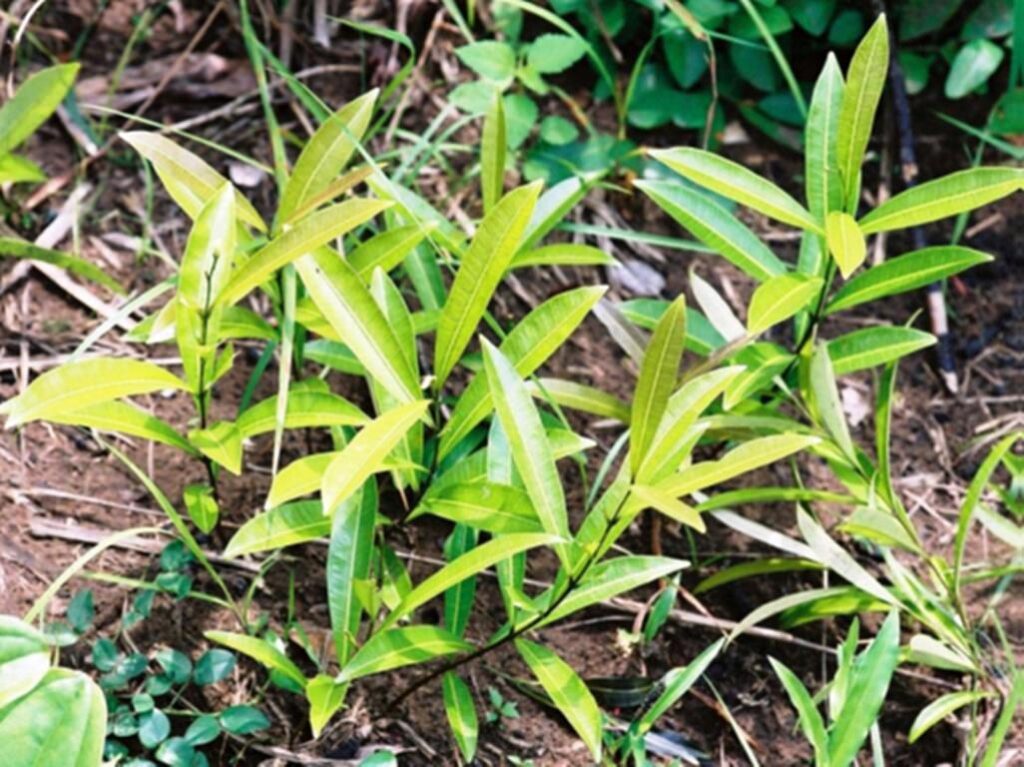
Description
A low, erect shrub or herb, 15 – 70 cm high. Leaves are often in whorls of 3 or 4. Flowers are fragrant, white, yellow or cream. Mature fruits may be found throughout the year. Fruits are often sold by children at the roadside
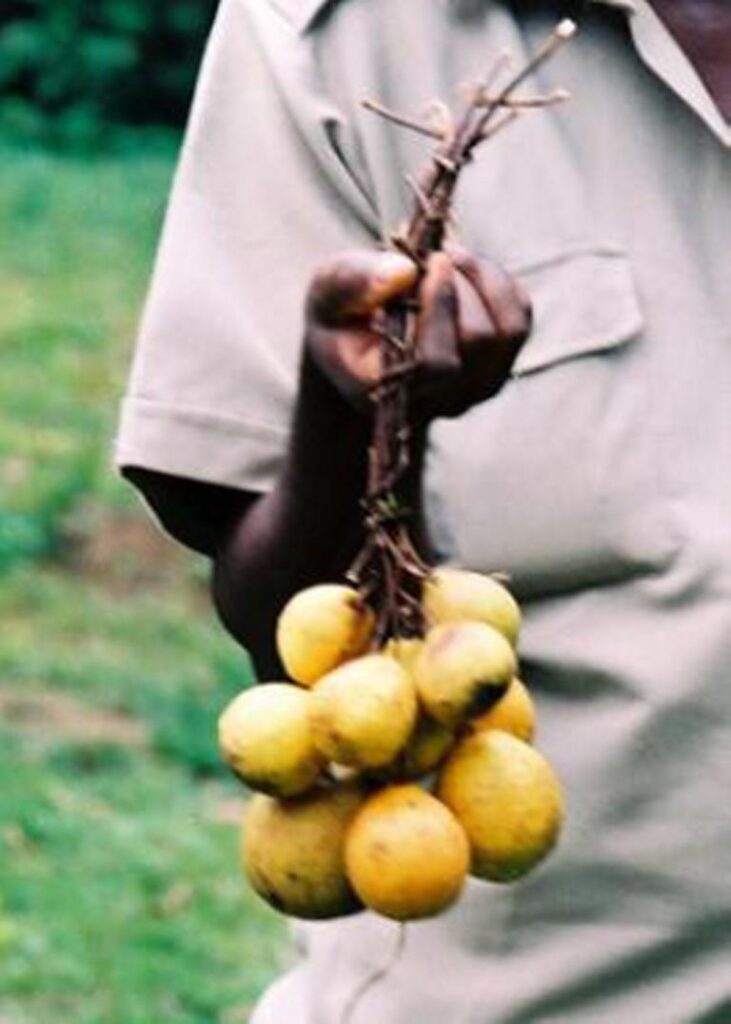
Ecology
Grows in the savanna and woodland in southern and western D.R. Congo and in adjacent parts of Angola, often on sandy soils. Altitude range 0 – 1,500 m.
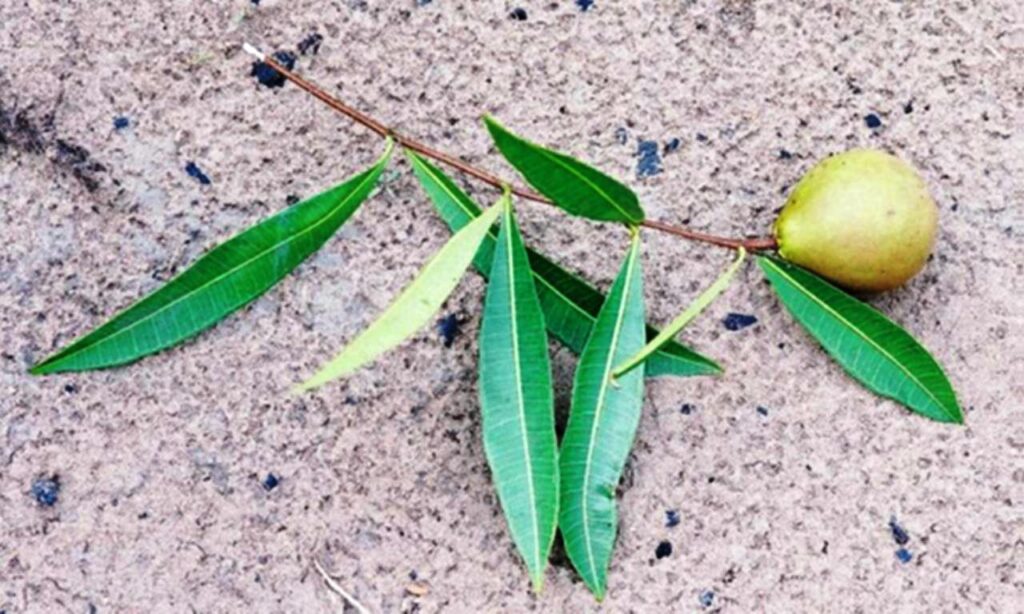
Uses
Produces a rubber of low quality. The fruits are edible and frequently sold in Kongo Central. The leaves are boiled and the liquid drunk for coughs.
References
Gillet & Paque 1910, Daeleman & Pauwels 1983, Burkill 1985, Persoon et al. 1992, Kibungu Kembelo 2010
Landolphia owariensis (Apocynaceae)
Common names Goki, dikuku, disuki (Kongo), white rubber vine
Description
A large, vigorous, woody vine up to 100 m long, which scrambles high into trees. The fruit flesh is white.
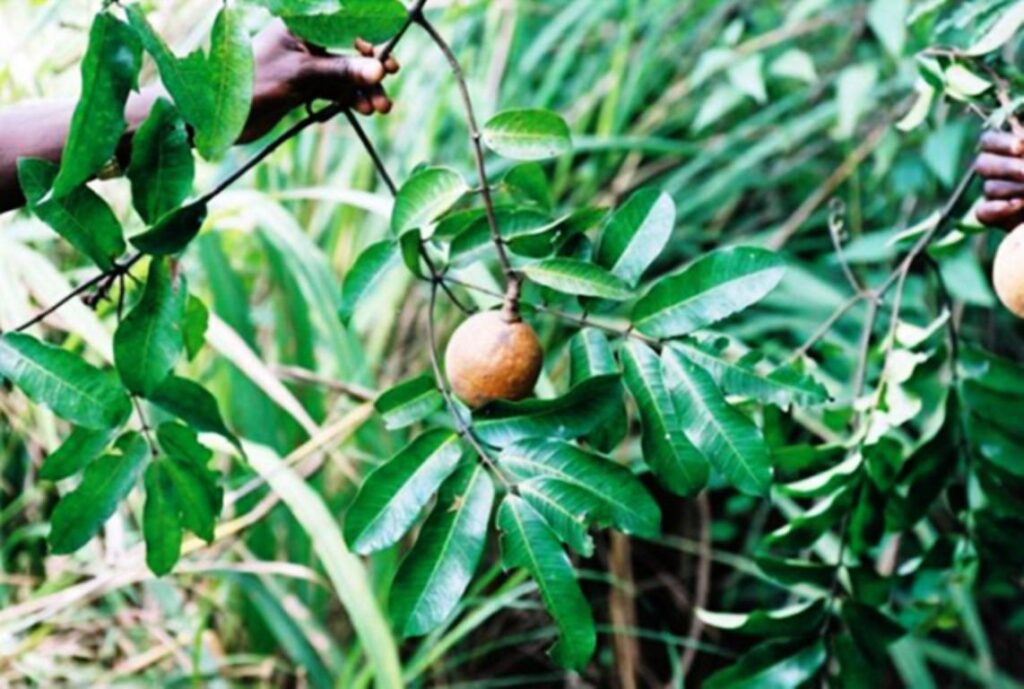
Ecology and propagation
Grows in wooded savanna and forest in Kongo Central. Altitude range 0 – 1,700 m. Present in tropical Africa, especially from Senegal to Angola and from Sudan to Zambia. It can survive bush fires and puts up new shoots after burning. Seed germination is poor (20% after 2 moths). Young plants require adequate shade.
Uses
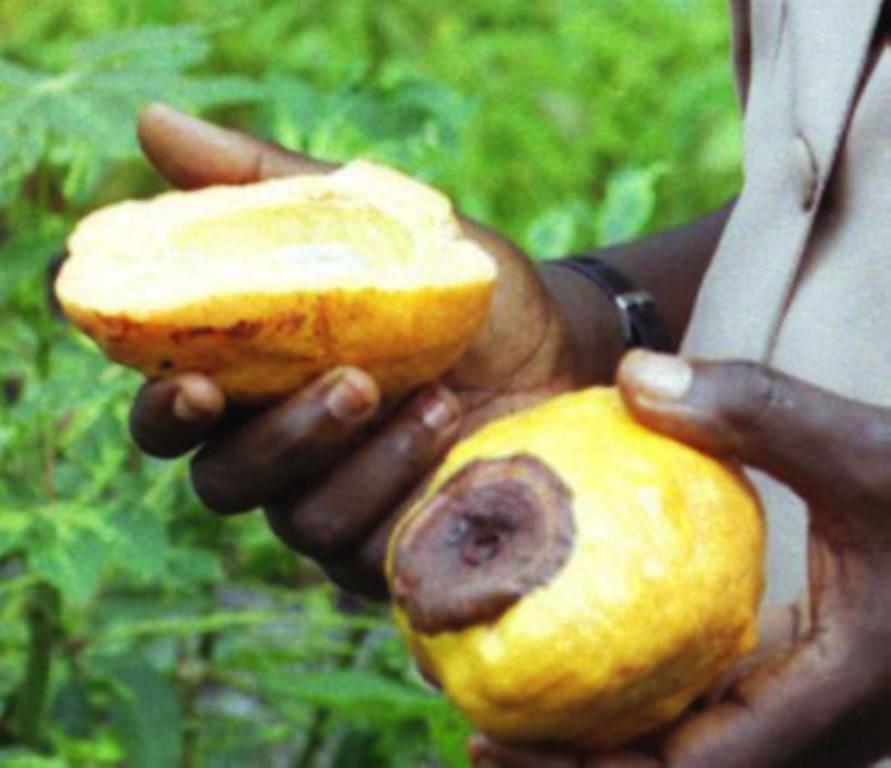
The fruit is eaten raw and has an acid-tasting pulp. It keeps and travels well. The plant used to be an important source of vine rubber. The latex is used to repair punctures and to trap birds. The latex may be either taken by mouth or used in an enema to get rid of intestinal worms.
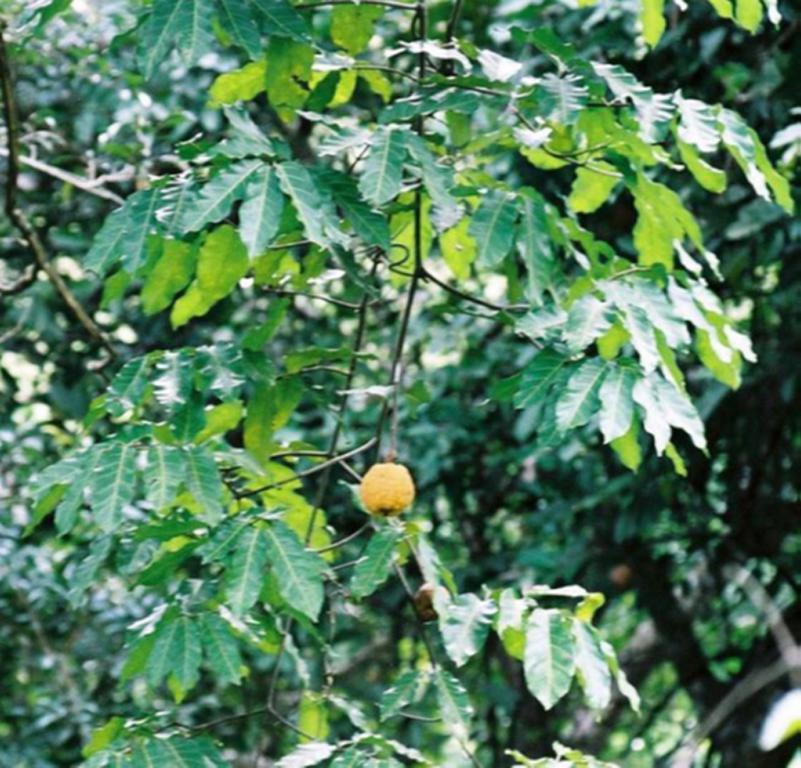
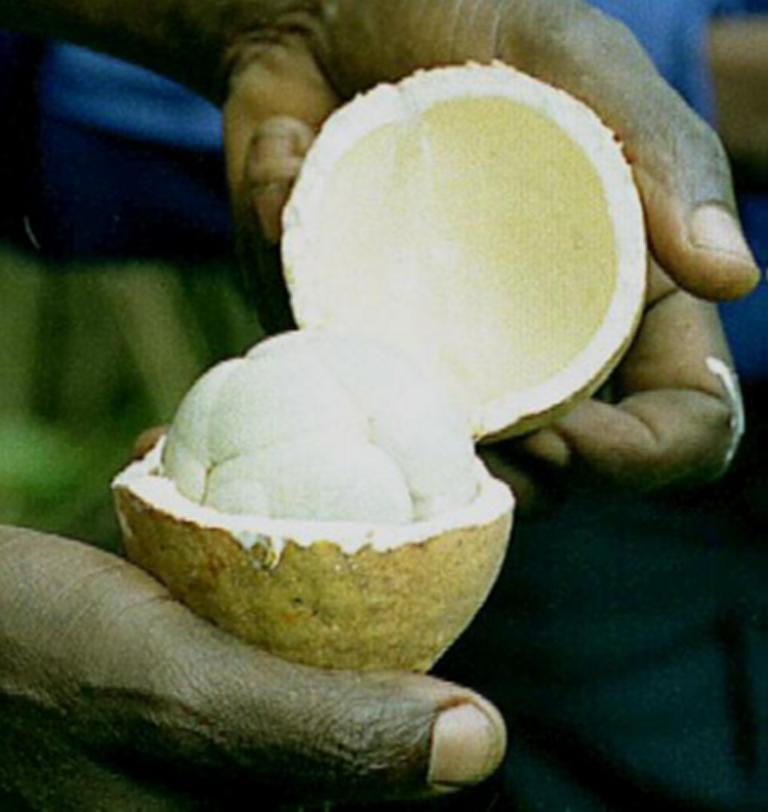
References
Gillet 1927, Staner & Boutique 1937, Uphof 1968, Burkill 1985, Leeuwenberg & Kupicha 1985, Persoon et al. 1992, Vivien & Faure 1996, Nsimundele 2004, Kibungu Kembelo 2010, Termote 2012
___________________________________________________________________________________________________________
Text and all photos at this article © Paul Letham & Augustin Konda ku Mbuta. Professional background and contact information of the authors of this article, can be found here.
.



